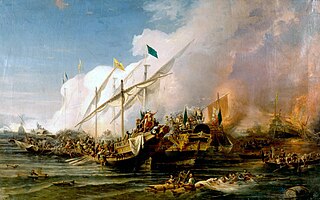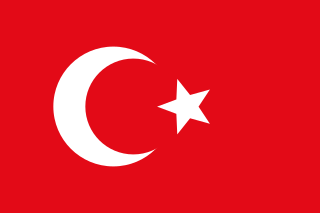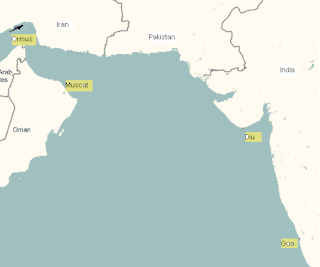
Guelders or Gueldres is a historical county, later duchy of the Holy Roman Empire, located in the Low Countries.

Charles V was Holy Roman Emperor and Archduke of Austria from 1519 to 1556, King of Spain from 1516 to 1556, and Lord of the Netherlands as titular Duke of Burgundy from 1506 to 1555. As he was head of the rising House of Habsburg during the first half of the 16th century, his dominions in Europe included the Holy Roman Empire, extending from Germany to northern Italy with direct rule over the Austrian hereditary lands and the Burgundian Low Countries, and a unified Spain with its southern Italian kingdoms of Naples, Sicily, and Sardinia. Furthermore, his reign encompassed both the long-lasting Spanish and the short-lived German colonizations of the Americas. The personal union of the European and American territories of Charles V was the first collection of realms labelled "the empire on which the Sun never sets".

The Battle of Lepanto was a naval engagement that took place on 7 October 1571 when a fleet of the Holy League, a coalition of Catholic states arranged by Pope Pius V, inflicted a major defeat on the fleet of the Ottoman Empire in the Gulf of Patras. The Ottoman forces were sailing westward from their naval station in Lepanto when they met the fleet of the Holy League which was sailing east from Messina, Sicily. The Spanish Empire and the Venetian Republic were the main powers of the coalition, as the league was largely financed by Philip II of Spain and Venice was the main contributor of ships.

The Battle of Preveza was a naval battle that took place on 28 September 1538 near Preveza in Ionian Sea in northwestern Greece between an Ottoman fleet and that of a Holy League assembled by Pope Paul III. It occurred in the same area in the Ionian Sea as the Battle of Actium, 31 BC. It was one of the three largest sea battles that took place in the sixteenth century Mediterranean, along with the Battle of Djerba and the Battle of Lepanto.

The Italian Wars, often referred to as the Great Wars of Italy and sometimes as the Habsburg–Valois Wars, were a long series of wars fought between 1494 and 1559 in Italy during the Renaissance. The Italian peninsula, economically advanced but politically divided among several states, became the main battleground for European supremacy. The conflicts involved the major powers of Italy and Europe, in a series of events that followed the end of the 40-year long Peace of Lodi agreed in 1454 with the formation of the Italic League.

The Schmalkaldic League was a military alliance of Lutheran princes within the Holy Roman Empire during the mid-16th century. Although originally started for religious motives soon after the start of the Reformation, its members later came to have the intention that the League would replace the Holy Roman Empire as their focus of political allegiance. While it was not the first alliance of its kind, unlike previous formations, such as the League of Torgau, the Schmalkaldic League had a substantial military to defend its political and religious interests. It received its name from the town of Schmalkalden, which is located in modern Thuringia.
Holy League may refer to:

Swabia is a cultural, historic and linguistic region in southwestern Germany. The name is ultimately derived from the medieval Duchy of Swabia, one of the German stem duchies, representing the territory of Alemannia, whose inhabitants interchangeably were called Alemanni or Suebi.

The Ottoman wars in Europe were a series of military conflicts between the Ottoman Empire and various European states dating from the Late Middle Ages up through the early 20th century. The earliest conflicts began during the Byzantine–Ottoman wars, waged in Anatolia in the late 13th century before entering Europe in the mid 14th century with the Bulgarian–Ottoman wars. In the mid 15th century, the Serbian–Ottoman wars and the Albanian-Turkish wars were waged by Serbia and Albania respectively against the Ottomans Turks. Much of this period was characterized by Ottoman expansion into the Balkans. The Ottoman Empire made further inroads into Central Europe in the 15th and 16th centuries, culminating in the peak of Ottoman territorial claims in Europe.
The Great War is an alternative term for World War I.

The Italian war of 1536–1538 was a conflict between King Francis I of France and Charles V, Holy Roman Emperor and King of Spain. The objective was to achieve control over territories in Northern Italy, in particular the Duchy of Milan. The war saw French troops invading Northern Italy, and Spanish troops invading France. The Truce of Nice, signed on June 18, 1538, ended hostilities, leaving Turin in French hands but affecting no significant change in the map of Italy. Overall, Spain increased its control over Italy, signifying the end of Italian independence. The war strengthened animosity between the Spanish and French, and reinforced ties between France and the Ottoman Empire which had sided with Francis I against Charles V.

Alfonso d'Avalos d'Aquino, VI marquis of Pescara and II of Vasto, was an Italian condottiero of Spanish origins, renowned for his service in favor of Charles V, Holy Roman Emperor and King of Spain.

The Ottoman Navy, also known as the Ottoman Fleet, was established in the early 14th century after the Ottoman Empire first expanded to reach the sea in 1323 by capturing Karamürsel, the site of the first Ottoman naval shipyard and the nucleus of the future Navy. During its long existence, it was involved in many conflicts and signed a number of maritime treaties. At its height, the Navy extended to the Indian Ocean, sending an expedition to Indonesia in 1565.
The Holy League of 1538 was a short-lived alliance of Christian states arranged by Pope Paul III at the urging of the Republic of Venice.
Salah Rais was an Ottoman privateer and admiral. He is alternatively referred to as Sala Reis, Salih Rais, Salek Rais and Cale Arraez in several European sources, particularly in Spain, France and Italy.

The Ottoman–Habsburg wars were fought from the 16th through the 18th centuries between the Ottoman Empire and the Habsburg Monarchy, which was at times supported by the Holy Roman Empire, Kingdom of Hungary, Polish–Lithuanian Commonwealth, and Habsburg Spain. The wars were dominated by land campaigns in Hungary, including Transylvania and Vojvodina, Croatia and central Serbia.
Antemurale Christianitatis was a label used for a country defending the frontiers of Christian Europe from the Ottoman Empire.

The Third Ottoman Venetian War (1537–1540) was one of the Ottoman–Venetian wars which took place during the 16th century. The war arose out of the Franco-Ottoman alliance between Francis I of France and Süleyman I of the Ottoman Empire against the Holy Roman Emperor Charles V. The initial plan between the two had been to jointly invade Italy, Francis through Lombardy in the North and Süleyman through Apulia to the South. However, the proposed invasion failed to take place.
The Battle of Gorjani or Battle of Đakovo was a battle fought on 9 October 1537 at Gorjani, a place in present-day Slavonia, between the towns of Đakovo and Valpovo, as part of the Little War in Hungary as well as the Hundred Years' Croatian–Ottoman War.

The Portuguese–Mamluk Naval War was a naval conflict between the Egyptian state of the Mamluks and the Portuguese in the Indian Ocean, following the expansion of the Portuguese after sailing around the Cape of Good Hope in 1498. The conflict took place during the early part of the 16th century, from 1505 to the fall of the Mamluk Sultanate in 1517.












